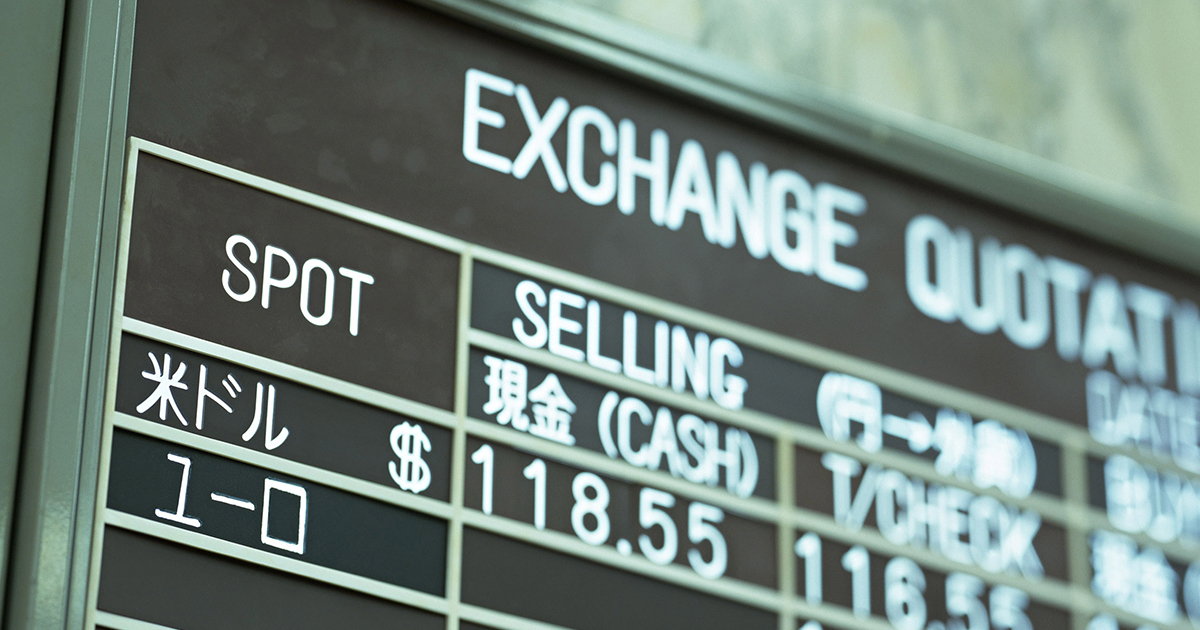What is the Big Mac Index?
The Basic Mechanism of the Big Mac Index
The Big Mac Index is an indicator devised by the British economic magazine The Economist in 1986. It converts the price of a Big Mac in each country into U.S. dollars and measures how much each country’s currency deviates from its appropriate exchange rate based on that price difference. It is based on the concept of purchasing power parity, which assumes that, theoretically, the price of the same product should be the same in any country.
This indicator is widely used as a convenient tool for understanding international economics and is frequently cited in news and economic analyses. The price of a Big Mac serves as a barometer reflecting a country’s economic conditions and price level, helping to compare the value of currencies across nations. However, it is important to remember that the Big Mac Index is only a rough guide and not an absolute measure.
Because exchange rates fluctuate due to various factors, the Big Mac Index alone cannot be used to make judgments. However, from a long‑term perspective, it provides useful information for grasping each country’s economic trends. By leveraging the Big Mac Index, one can gain a deeper understanding of the current state of the global economy. Since it is based on purchasing power parity theory, exchange rates are expected to converge toward the price differences of Big Macs over the long run.
Why is the Big Mac Used?
The Big Mac is sold in many countries worldwide and, because its quality and size are relatively uniform, it is suitable as a comparison target. Additionally, various economic factors such as raw material costs, labor costs, and transportation costs are reflected in its price, making it easy to mirror each country’s economic conditions.
McDonald’s is a global company with outlets around the world. The Big Mac is its flagship product, produced with almost the same recipe, making it convenient for comparing prices across countries. Moreover, the price of a Big Mac is influenced by various factors such as each country’s cost of living, exchange rates, and economic policies, making it an excellent subject for economic analysis.
Furthermore, the Big Mac is a familiar product for consumers and its price changes are easily felt, making it attractive as economic news. In this way, the Big Mac’s universality, its characteristics as an economic indicator, and its newsworthiness make it the optimal item for the Big Mac Index. If the methods of sourcing raw materials or cooking differ significantly between countries, the precision of comparisons using the Big Mac Index may decline.
Limitations and Cautions of the Big Mac Index
The Big Mac Index is merely a convenient indicator and does not predict absolute exchange rates. Various factors such as each country’s tax system, market structure, and consumer preferences influence the price, so taking it at face value is risky. Additionally, if the Big Mac is expensive relative to the average income level in a country, the index may become distorted.
For example, in high‑cost-of‑living countries like Switzerland, the price of a Big Mac tends to be higher, likely due to higher labor costs and rent. Conversely, in low‑income countries such as India, the Big Mac is relatively expensive and is not frequently purchased by ordinary consumers. Therefore, the Big Mac Index does not necessarily reflect a country’s overall economy accurately.
When using the Big Mac Index, it is important to understand these limitations and combine it with other economic indicators for analysis. Also, considering each country’s economic situation and policies in addition to the Big Mac price can lead to more accurate analysis. Treat the Big Mac Index as a reference and avoid overconfidence. Differences in tax systems and market structures can significantly affect the price of a Big Mac.

2024 Latest Big Mac Index Ranking
Which country has the highest Big Mac price?
In the 2024 Big Mac Index ranking, Switzerland has the highest price. This is attributed to Switzerland’s high cost of living and the strength of the Swiss franc.
Switzerland is known worldwide for its high cost of living. In particular, labor costs and rent are high, which is reflected in the price of the Big Mac. Additionally, the Swiss franc is regarded as a safe-haven asset and tends to be purchased during global economic fluctuations. As a result, the value of the Swiss franc rises, and the Big Mac price increases.
The price of the Big Mac in Switzerland is very high compared to other countries, making it one of the factors that travelers notice about the high cost of living. However, considering Switzerland’s high standard of living and stable economy, the high Big Mac price may be understandable. A strong Swiss franc can also be a disadvantage for the export industry.
Which countries have a cheap Big Mac?
Conversely, countries where the Big Mac is relatively cheap include Turkey. This is due to the low value of the Turkish lira and the low cost of living.
Turkey has recently seen a significant decline in the value of its currency, the lira, and inflation has been rising. As a result, the Big Mac price is relatively cheap. Turkey’s cost of living is lower than that of other developed countries, and food and services are affordable. For travelers, the low prices make it a popular destination for budget-friendly trips.
However, Turkey’s economic situation is unstable, and inflation and currency depreciation may continue in the future. Therefore, the Big Mac price could fluctuate, so caution is advised. The outlook for the Turkish economy is uncertain, and future developments should be monitored. Political conditions could also have a significant impact on the economy.
Japan’s Big Mac Price and Exchange Rate
Japan’s Big Mac price is relatively low compared to other developed countries. This is thought to be due to prolonged deflation and a weakening yen. As the yen weakens, Japan’s prices appear cheaper to overseas observers, and the Big Mac Index tends to decline.
Japan has experienced deflation since the late 1990s, making it difficult for prices to rise. Consequently, the Big Mac price remains lower than that of other countries. In recent years, the yen has weakened further, making Japan’s prices even cheaper to overseas observers. A weak yen benefits export firms but also raises the cost of imports, increasing consumer burden.
Japan’s Big Mac price fluctuates with exchange rates and economic conditions, so future trends should be monitored. If the yen weakens further, the Big Mac Index could decline further. Overcoming deflation has been a long-standing challenge, and government and Bank of Japan policies are closely watched. For inbound tourists, a weak yen enhances the appeal of traveling to Japan.
Current State of the Global Economy as Seen Through the Big Mac Index
Signs of Inflation and Deflation
The Big Mac Index is also useful for comparing inflation rates across countries. Countries where the price of a Big Mac is rising may be experiencing inflation, while countries where the price is falling may show signs of deflation.
Inflation is the phenomenon of prices continuously rising, while deflation is the phenomenon of prices continuously falling. Changes in the price of a Big Mac can serve as clues to these signs. However, the price of a Big Mac fluctuates due to various factors such as raw material costs, labor costs, and exchange rates, so when judging signs of inflation or deflation, it is necessary to analyze alongside other economic indicators.
When inflation advances, consumers’ purchasing power may decline and corporate profits may worsen. Conversely, when deflation progresses, corporate investment enthusiasm may wane and economic growth may slow. Because inflation and deflation have significant impacts on the economy, governments in each country must implement appropriate economic policies to stabilize prices. Central banks attempt to control inflation and deflation through monetary policy.
Purchasing Power Parity and Distortions in Exchange Rates
The Big Mac Index shows that purchasing power parity does not hold. In theory, the same product should cost the same wherever it is bought, but in practice price differences arise due to exchange rate effects and each country’s economic conditions. These price differences can also create investment opportunities and trade imbalances.
Purchasing power parity is the idea that exchange rates are set so that the purchasing power of different currencies is equal. However, in reality exchange rates fluctuate due to various factors, so purchasing power parity does not hold. The Big Mac Index serves as a tool to visualize that distortion.
Distortions in exchange rates can become investment opportunities for investors but pose risk factors for traders. Additionally, fluctuations in exchange rates can alter international capital flows and potentially have a large impact on the economy. Governments in various countries implement a range of policies to stabilize exchange rates. Currency intervention is one such policy that influences exchange rates.
Emerging Economies’ Growth and Big Mac Prices
In emerging economies, the price of a Big Mac tends to rise with economic growth. This is thought to be influenced by rising income levels, higher labor costs, and increased raw material costs. The Big Mac Index can also be used as an indicator of economic growth in emerging economies.
As economic growth leads to higher incomes, consumers’ purchasing power increases and demand for products like the Big Mac rises. Increased demand can lead to higher production volumes, and labor and raw material costs may also rise. These factors contribute to the price increase of the Big Mac.
The Big Mac Index serves as reference information for understanding the speed and direction of economic growth in emerging economies. However, the economic conditions in emerging economies are often more unstable than those in advanced economies, so decisions cannot be based solely on the Big Mac Index. Investing in emerging markets can offer high returns but also carries high risk, so caution is needed. Political risk must also be considered.
Big Mac Index and Our Lives
Overseas Travel and Value
The Big Mac Index is one of the tools used to assess value when traveling abroad. If you travel to a country where the Big Mac is relatively cheap, the overall cost of living is lower, and you may enjoy a more affordable trip.
The Big Mac Index is only a guideline and does not apply to all goods and services. However, in countries where the Big Mac is inexpensive, other products and services may also be relatively affordable. Checking the index before you travel can help you understand the cost of living at your destination and assist in budgeting.
However, you should also consider the destination’s culture, customs, and safety, not just the Big Mac Index. Gathering information in advance is essential for a safe and comfortable trip. Use travel agencies and websites to obtain up-to-date information. Consider purchasing overseas travel insurance as well.
Impact of Yen Depreciation and Imported Goods
As the yen weakens, not only does the Big Mac Index decline, but the prices of imported goods rise, affecting our daily lives. Products that rely heavily on imports, such as food and energy, are more susceptible to the impact of yen depreciation.
Yen depreciation refers to the decline in the yen’s value, causing imported goods to become more expensive. Japan heavily depends on imports for food and energy resources, so a weakening yen can raise the prices of these items and strain household budgets.
To mitigate the effects of yen depreciation, you can choose domestic products, practice savings, and select energy‑efficient items. The government also needs to implement policies such as stabilizing import prices and fostering domestic industry as part of its yen‑depreciation strategy. While a weaker yen benefits exporters, its overall impact on the domestic economy must be considered.
Individual Investing and Currency Risk
When investing in overseas stocks or bonds, you must consider currency risk. A weaker yen increases the value of foreign assets in yen terms, while a stronger yen decreases it. The Big Mac Index does not predict exchange rate movements, but it can serve as a reference when thinking about long‑term currency risk.
Currency risk refers to the risk that the value of foreign‑currency assets fluctuates due to changes in exchange rates. When making overseas investments, you need to fully understand currency risk and implement appropriate risk management. Diversification and currency hedging can help reduce this risk.
The Big Mac Index can provide insight into long‑term exchange‑rate trends. However, exchange rates fluctuate due to many factors, so you cannot base decisions solely on the index. Make investment decisions at your own risk, and consider seeking professional advice.
Summary
The Big Mac Index is a convenient tool for understanding the current state of the global economy, but it is important to recognize its limitations. By analyzing it alongside other economic indicators, you can gain a deeper understanding of the world economy and apply that knowledge to your life and investments.
The Big Mac Index visualizes price levels and exchange rate distortions across countries, providing clues to detect signs of inflation or deflation. It also serves as one of the factors to assess value when traveling abroad or making overseas investments.
However, the Big Mac Index is merely a convenient indicator and not absolute. It is important to consider each country’s economic conditions, policies, and tax systems, and to analyze it in combination with other economic indicators. By staying informed about global economic trends and adapting to changes, you can lead a richer life. Maintaining a global perspective is becoming increasingly important.
Reference Sites
そもそも為替を知ることのメリットは何? まずは、ビッグマックから為替の世界を覗いてみよう!…













